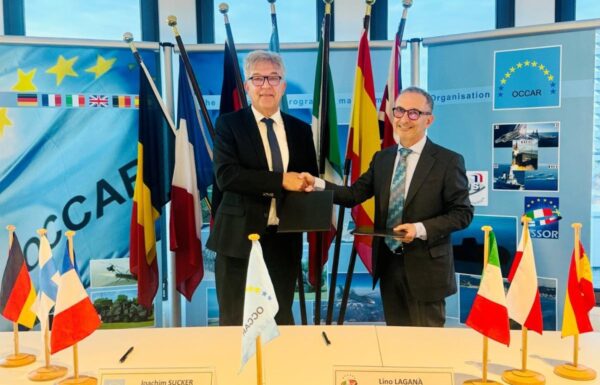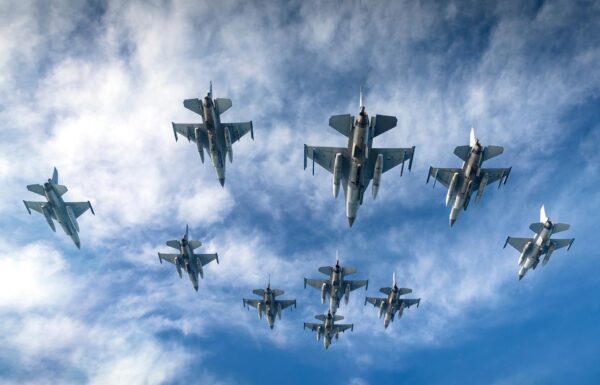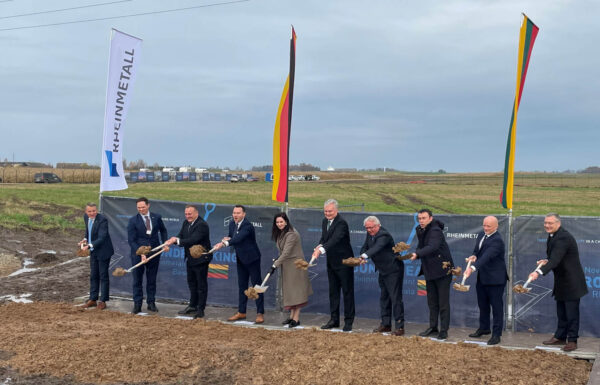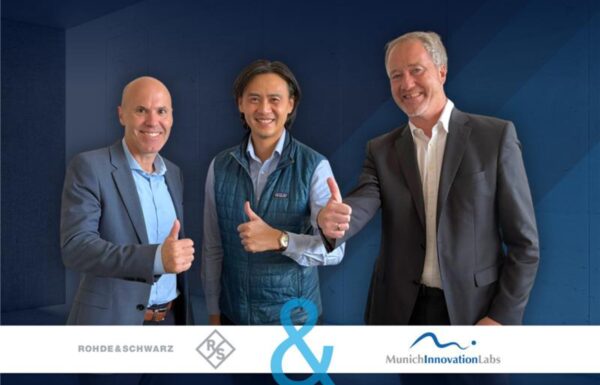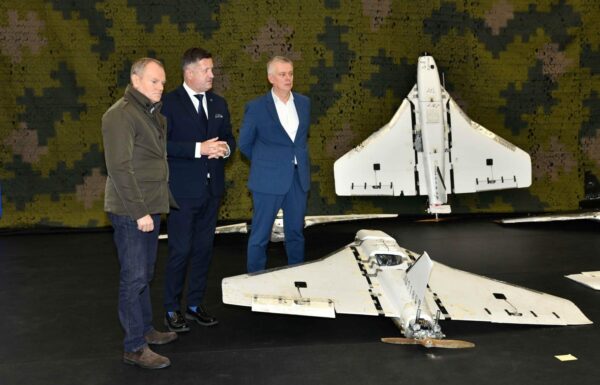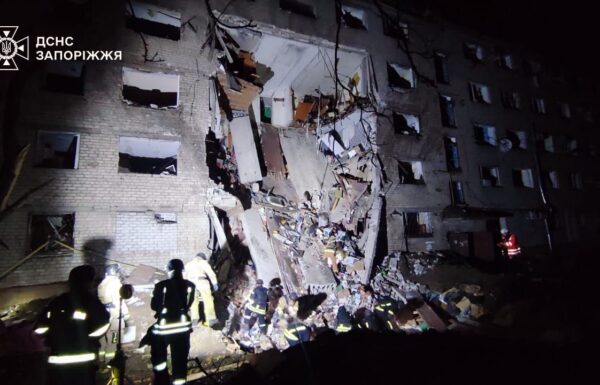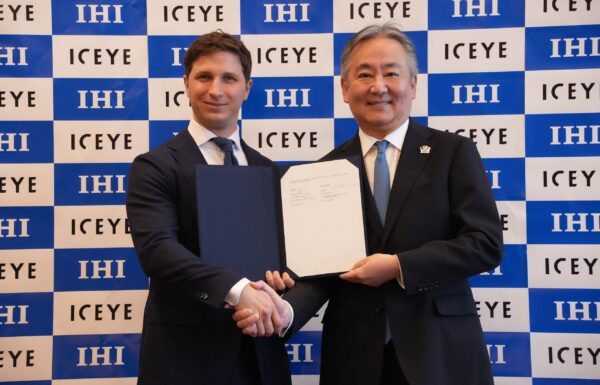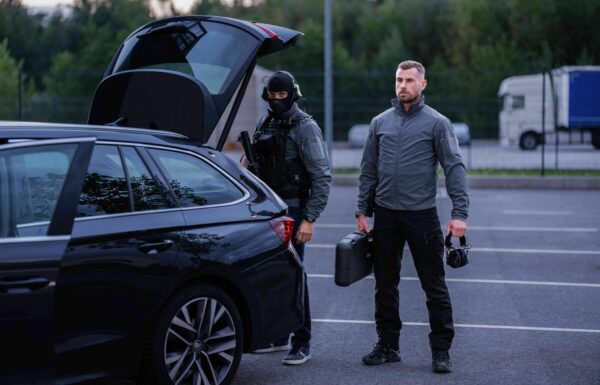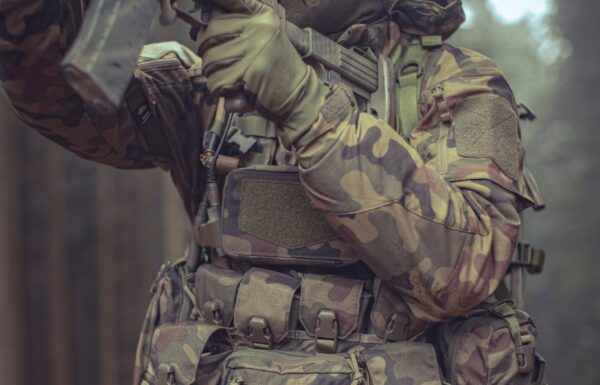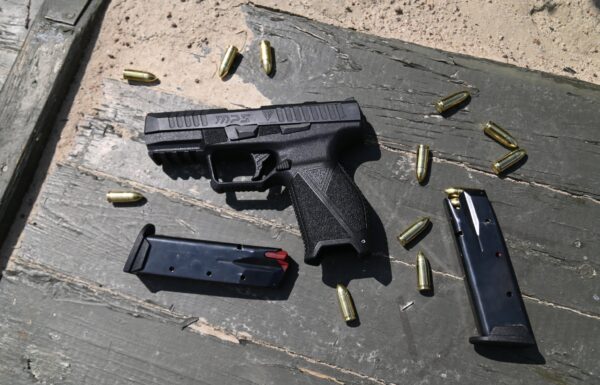The world’s leading helicopter manufacturers also offer highly advanced training solutions. These are usually based on cooperation with training organizations and simulator manufacturers. However, one offer stands out from the competition with some significant differences. PZL-Świdnik, the company in question, is the only one capable of delivering a comprehensive solution in which all system elements come from a single manufacturer.
Training support
Leonardo designs, manufactures, and delivers integrated pilot training solutions for its helicopters, while also providing support for their operation and maintenance. Therefore, PZL-Świdnik, as part of Leonardo, can offer a comprehensive package of simulators alongside deliveries of training and combat helicopters produced at its Świdnik facility. PZL-Świdnik’s offer covers the full spectrum of training needs, both on real aircraft and in virtual environments. The training scope includes the entire process, from basic instruction to a wide range of multi-domain missions, thanks to the ability to network simulators. In general, the manufacturer’s portfolio includes various types of helicopters, ranging from the single-engine AW119T to the twin-engine AW109 TrekkerM, which was offered to Poland, and up to the larger twin-engine AW169M.
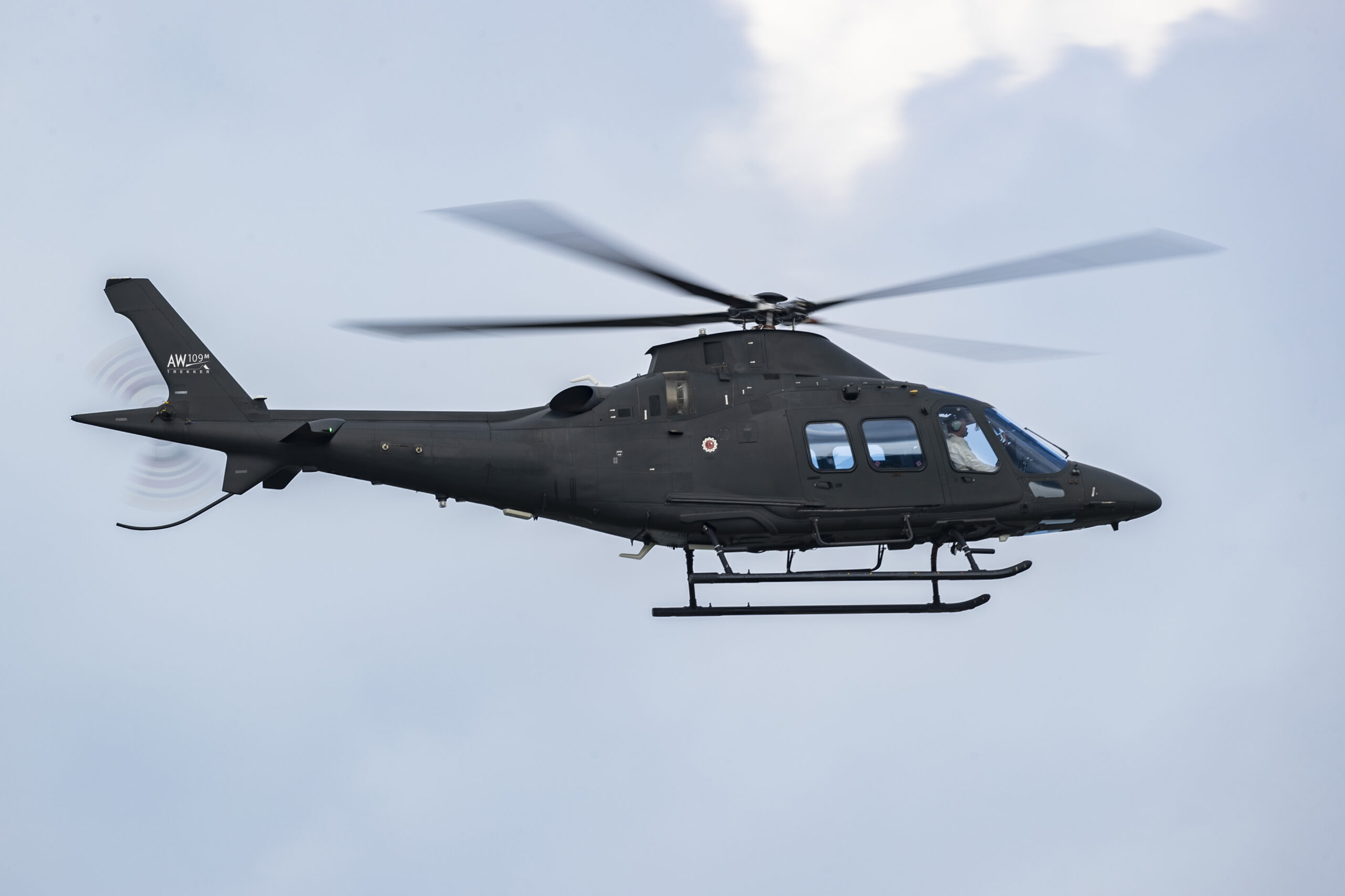 AW109 TrekkerM helicopter / Photo: Leonardo Helicopters
AW109 TrekkerM helicopter / Photo: Leonardo Helicopters
All these helicopters feature modern avionics, excellent performance, and outstanding cockpit visibility. To these qualities, one can add a unique solution – an observer’s seat placed behind the crew seats. Another advantage is the spacious cabin, which can be easily reconfigured.
The learning process, from the basics of piloting up to mission training, makes use of training devices (simulators). This significantly reduces the time required on real aircraft, lowering training costs and greatly enhancing safety. Since the simulators come from a single source, they are continuously updated and accurately reflect the actual helicopter. According to PZL-Świdnik representatives, the integrated training systems guarantee the highest quality at every stage of training – for pilots, ground support personnel, as well as staff responsible for helicopter inspections and overhauls. The training program is designed to enable the quick transfer of skills acquired in the simulator to real-world flying, thereby increasing the overall efficiency of the process.
AW109 TrekkerM
One of the elements of the training system offered by PZL-Świdnik to the Polish Armed Forces is the AW109 TrekkerM helicopter. This is the military version of the AW109 Trekker – a new variant of the well-known and proven multipurpose design, powered by two Pratt & Whitney Canada PW207C turboshaft engines, each delivering 548 kW (735 hp) of take-off power and controlled by a digital FADEC system. It is capable of operating in all conditions, both day and night.

The AW109 TrekkerM helicopter’s cockpit equipment provides the capability to train in piloting modern helicopters / Photo: Leonardo Helicopters
Representatives of PZL-Świdnik state that the TrekkerM perfectly fulfills the role of a training helicopter across the entire training spectrum – from basic piloting instruction to instrument flight training under Instrument Flight Rules (IFR). It is intended to serve as an effective tool for honing skills with the use of all available avionics systems and weaponry, before the trainee pilot transitioning to the target helicopter type.
The high performance of the AW109 TrekkerM means not only greater flight speed and rate of climb, but also a wider safety margin during training. The helicopter is designed to operate in rarefied air conditions (high temperatures, mountainous environments).
The AW109 TrekkerM cockpit is spacious and provides good working comfort. It is also equipped with ballistic protection, which, combined with self-sealing fuel tanks and the ability to continue flying after losing oil from the main gearbox (dry-run capability), enhances operational safety in combat conditions. The equipment suite of the AW109 TrekkerM is optimal for its class. This training and combat helicopter features communication systems, including cryptographic ones, as well as navigation and identification systems, both guided and unguided weapons, a gun pod, and side-mounted machine guns. Thanks to this, trainee pilots can more effectively improve their skills in combat conditions. An interesting feature is the observer’s seat placed centrally behind the pilots’ seats, allowing the observer to learn by watching another student pilot’s flight and gain experience.
The helicopter can perform VFR/IFR flights with either a single-pilot or dual-pilot crew. The AW109 TrekkerM is equipped with a glass cockpit. Instead of traditional mechanical instruments, the instrument panel uses multifunction liquid-crystal displays that present data in a manner typical of modern helicopters, ensuring excellent situational awareness. The pilot also has access to a Synthetic Vision System (SVS), which generates an artificial view of the helicopter’s surroundings, improving safety during low-visibility flights. The Highway In The Sky (HITS) system displays the planned flight path to facilitate navigation during transits, supported by a moving map display. Completing the safety suite is the Helicopter Terrain Avoidance Warning System (HTAWS), further enhancing flight safety.

AW149 helicopter simulator cockpit with instructor station / Photo: Leonardo Helicopters
It is also worth mentioning another aspect related to the AW109 TrekkerM helicopter. If Poland were to decide on acquiring the training system offered by PZL-Świdnik, the training and combat helicopters would be manufactured in Świdnik. Beyond the economic benefits, such a solution would also simplify the future operation of these rotorcraft, as any technical changes or upgrades could be carried out locally in Poland. Interestingly, as many as 29 Polish subcontractors are already involved in the production of AW109 helicopters, which means the model is already quite significantly localized.
Simulators
Modern avionics increasingly relieve pilots from the need to constantly monitor the helicopter’s operating status. Pilots are now able to focus more on carrying out missions and cooperating with other aircraft or vehicles, rather than on the act of flying itself. This phenomenon demands a new approach to the training process. Synthetic training devices (simulators and training aids) are making greater use of virtual reality and artificial intelligence, becoming a key element of a comprehensive training system. Virtual and augmented reality, combined with sensory stimuli experienced by the pilot and crew and replicated in the simulator, significantly enhance training effectiveness.
Within its comprehensive training system, PZL-Świdnik offers various types of simulators and training devices that replicate flights with the highest possible realism provided by modern technologies.
Here lies the advantage of simulators developed by the helicopter manufacturer itself, which possesses the most accurate data describing the behavior of its designs in flight. This enables the most precise representation of helicopter characteristics in a simulated environment, as these are based on actual flight test results, while in-flight performance data is continuously updated by the manufacturer. Every helicopter upgrade carried out by PZL-Świdnik, in response to future military needs, will be reflected in the simulators.

Motion-platform simulator using augmented reality / Photo: PZL-Świdnik
PZL-Świdnik has previously presented a new generation of mobile simulators that use virtual and augmented reality – VxR. The VxR simulators are compact in size and do not require extensive infrastructure, which increases their flexibility of use. They do not require large simulator centers and can be installed wherever needed. These types of simulators are not only effective in the training process, helping to save on helicopter operating costs during training, but the operation of the VxR simulators themselves is also cheaper compared to traditional simulators. More importantly, thanks to their low operating costs, pilots can use them not only for training while acquiring new skills, but also as an excellent tool for improving proficiency and independently practicing, for example, emergency procedures or complex planned missions before carrying them out, or simply for reviewing training material on their own.
VxR simulators are already in use at pilot training centers, including Leonardo Training Academies, in Italy and the USA. Although designed for military use, the solution meets the certification requirements of both the European Union Aviation Safety Agency (EASA) and the U.S. Federal Aviation Administration (FAA). It can therefore also be used in civilian training programs.
The fact that the simulators are supplied by the same entity that provides the training and combat helicopters simplifies all logistical and organizational processes. All users’ needs can be met through a single supplier.
AW149 SAR
PZL-Świdnik’s portfolio, as presented during this year’s MSPO, also includes specialized helicopters for Search and Rescue Groups. These units provide air rescue services throughout the country for both military and civilian aviation. Currently, they operate PZL W3 Sokół helicopters in the SAR version – with the 1st SAR Group in Powidz and the 2nd SAR Group in Warsaw-Okęcie – as well as Mi-8 helicopters with the 3rd SAR Group in Kraków-Balice. Since these rotorcraft have been in service for quite some time, the moment is approaching when they will need to be replaced with a new design. In this regard, PZL-Świdnik’s offer may include AW149 helicopters in the SAR version, manufactured domestically in Świdnik.
The AW149 helicopter is certified for day and night operations in all weather conditions. The cockpit is adapted for the crew’s use of night vision goggles. The AW149 is also equipped with an electro-optical turret that enables observation in both the visible and infrared spectrum.
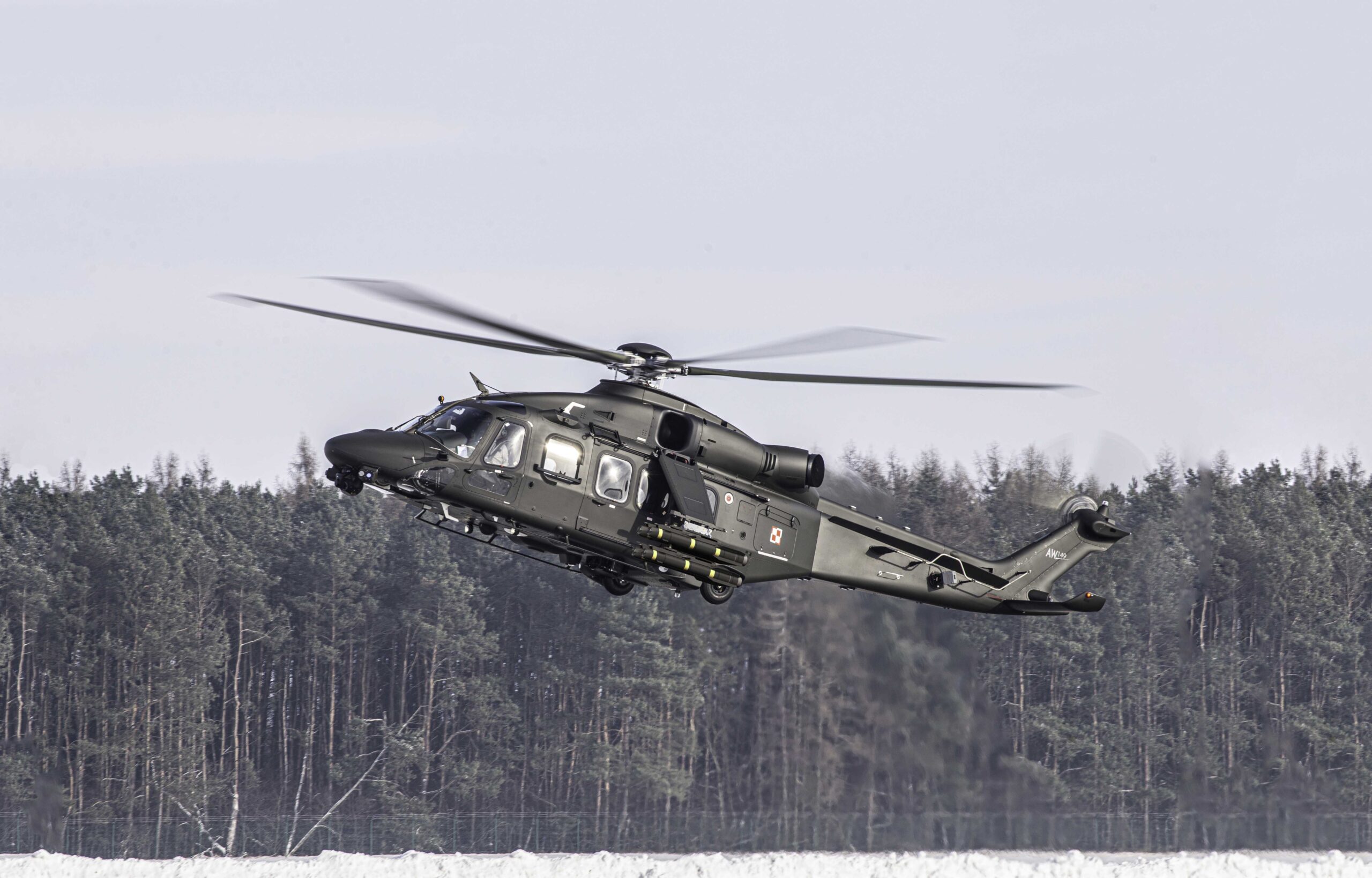
AW149 Land Forces helicopter / Photo: PZL-Świdnik
The AW149 features wide, rear-sliding doors on both sides of the cabin. The fuselage width allows stretchers to be placed perpendicular to the helicopter’s longitudinal axis, making casualty loading easier. The cargo cabin also features a storage compartment where items such as stretchers can be stored, ensuring they do not interfere with personnel inside the cabin during flight. The helicopter can be equipped with a single or dual rescue hoist, enabling personnel to be recovered from the ground without landing.
In the case of the AW149, it is also significant that this helicopter is produced at the PZL-Świdnik facility. The Polish manufacturer has complete control over possible modifications and also provides support for routine and periodic maintenance of the helicopters. This offers a unique opportunity for direct cooperation between the user and the manufacturer, for instance, in configuring ordered helicopters. Since the Land Forces have already ordered 32 helicopters of this type, operating additional units would be easier from a logistics perspective.


